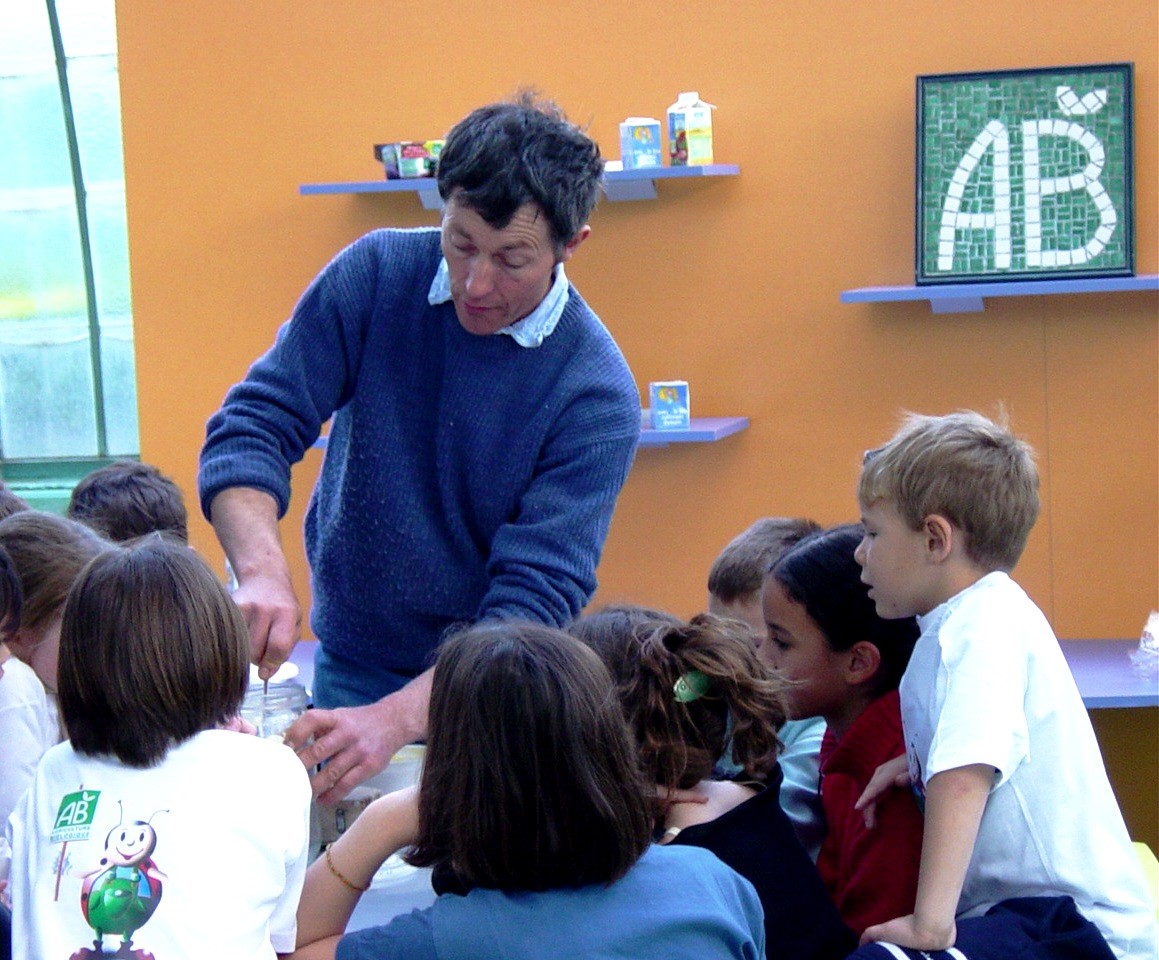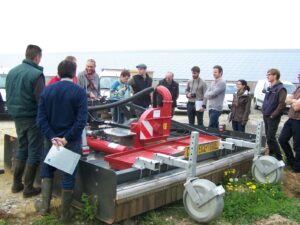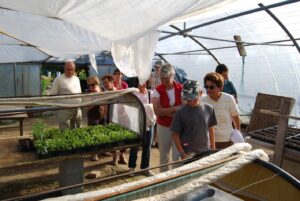Complementary Collective Catering

The necessary complementarity of different commercial outlets, to introduce more organic products in collective catering and offer potential new channels for local farmers.
Key words: Local, reduced waste, sustainability
Short description
Name of the initiative? Complementary Collective Catering
Country France
Region countrywide
What kind of initiative Farming/production, Education/training, Environmental, Community, Policy making
The Story
When a farmer is going to kill a cow, he needs a commercial outlet for the cheapest part – which might be the schools, and the more expensive part – which will likely be restaurants.
The idea is putting together producers with possible markets and seeing how they complement each other and how they might be able to work together beneficially.
If a school wants to have organic meat and approaches a farmer, it won’t be an entire cow they are interested in. It’s not going to work that way. The farmer needs to see how different actors and different commercial outlets can help him sell the entire cow and give an appropriate value for every part of the cow.
“We facilitate and encourage farmers to form networks so they can sell their products sustainably all year round. We have to think of the whole agricultural chain. “
We facilitate and encourage farmers to form networks so they can sell their products sustainably all year round. We have to think of the whole agricultural chain.
France’s National Federation of Organic Agriculture (FNAB) started to work on collective catering 20 years ago. Sometimes we are approached by our farmers looking for new local markets. Perhaps a farmer’s child attends a local school and he wants to change the food offered there with some of his products. There are a constraints for producers selling to schools, for example they can sell their vegetables from September to June, but the months of July and August, the schools are closed, and this is a problem because it’s when most of the products are available. (Historically children were off school in the months of July and August because they were needed to work in the family’s fields.) If the farmer talks to hospitals, though, they need vegetables all year round.
Lately, because a new law in France that wants every school to have 20% organic products by 2022, schools have approached us to find local suppliers of organic food. A lot of schools, hospitals and even the French army came to us to not only to source the products but to show them the way to cook it.
“Collaboration can work when we understand a single segment of collective catering won’t really be interesting by itself for a farmer.”
Collaboration can work when we understand a single segment of collective catering won’t really be interesting by itself for a farmer. We need to understand how the different commercial outlets need to work together and how the different collective caterings work together. Once this is understood by the farmer, the parents, the schools, the decision makers, the next step is getting everyone to sit around the table and try to think together on how locally they can find a solution to make collective catering an interesting commercial outlet for the producers.
“For the past fifty years our way of thinking about food is ‘what do I want to eat today?’”
For the past fifty years our way of thinking about food is ‘what do I want to eat today?’ and of course, the products are available, and I can find them cheaply. Now if we really want to change that by going to sustainable collective catering there is a whole state of mind that needs to change. Chefs must create a menu considering what is available now, respecting seasonality. They must look at the available ingredients and ask, ‘What good and nutritious meal can I cook?’ This is a huge challenge. Our whole mentality needs to change so that we realise how what we eat is linked to jobs and people around us and we can’t just expect a farmer to produce a particular cut of meat in any quantity without considering all the other cuts and where they go. Consumers need to understand the constraints of a farmer trying to produce food in a sustainable way.
“Consumers need to understand the constraints of a farmer trying to produce food in a sustainable way.”
We try to help chefs build their menus and offer training, considering what agriculture is and how it has evolved over the past fifty years. We look at quality. Most of the time we go to schools for this, but we always try and incorporate a visit to a farm. It’s good for them to see with their own eyes what it means to produce.
“…we always try and incorporate a visit to a farm. It’s good for them to see with their own eyes what it means to produce.”
Some of the teachers get involved making the meal and will link it to their teaching. A maths teacher might make their student think about the impact of CO2 production of cattle, infusing this reflection in their course teaching, but not everybody does this.
“When we are trying to make everyone sit around the table, farmers, chefs, teachers, parents, decision makers, there are still very heavy social constructs.”
When we are trying to make everyone sit around the table, farmers, chefs, teachers, parents, decision makers, there are still very heavy social constructs. The decision makers often talk a lot and drive the discussions when everyone should have their voice, especially farmers, who are not used to these kinds of meetings. FNAB facilitates the gatherings to give everyone an opportunity to speak and explain what works for them.

Additional information
—
Repository compiled by: Julian Renard
E-mail contact: jrenard@fnab.org
